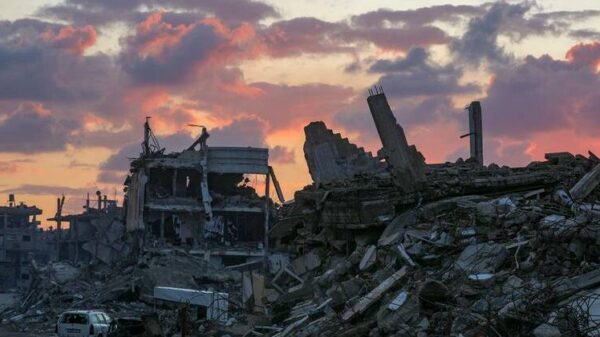Recent claims circulating on social media assert that the number of Jews who died during the Holocaust is significantly lower than the widely accepted figure of six million. Specifically, these claims reference Red Cross records suggesting that fewer than 300,000 Jews perished. However, experts have categorically debunked this assertion, emphasizing that it misrepresents the original documents.
The contention arises from documents published by the Red Cross, which detail death certificates issued for a select number of concentration camps. These records reflect only those cases where next of kin applied for death certificates, not the total number of victims. For instance, one widely shared post uses a cropped version of a 1984 Red Cross document to claim there were only 280,000 deaths in concentration camps. Another post cites an earlier 1979 version that reports a lesser figure of 271,301.
Dr. Ran Porat, an expert on Jewish history at Monash University, remarked that this document is often exploited by Holocaust deniers. He pointed out that reputable organizations like the Arolsen Archives, which serves as a central repository for documentation on Nazi persecution, have thoroughly debunked these claims. The Arolsen Archives explains that the Special Registry Office in Bad Arolsen, Germany, was established in 1949 to issue death certificates for victims of Nazi concentration camps.
According to the Arolsen Archives, “Death certificates are issued upon receipt of an application from the next of kin when there is sufficient documentation of the death of the person concerned.” This means the figures cited by those questioning the Holocaust only reflect a fraction of the millions who were murdered, excluding those killed in extermination camps such as Auschwitz-Birkenau and those who fell victim to mass shootings.
A critical note at the bottom of the Red Cross document states, “The notarization figures of the Special Registry Office do not allow any conclusions to be drawn on the actual number of deaths in the concentration camps.” Historian Sebastian Farre, who has studied the history of the Red Cross and Nazi prisoners, noted that revisionist literature often cherry-picks information to suit specific narratives. He emphasized the importance of contextualizing such documents within the broader historical record.
The commonly accepted figure of six million Jewish deaths during the Holocaust is supported by extensive research. Professor Farre explained that this estimate is derived from numerous studies, some of which continue to be published. He adds, “The figure of six million is a compromise that results from the difficulty of accurately quantifying the massacres, but the vast majority of studies provide an estimate between five and seven million.”
The Jewish Virtual Library acknowledges the challenges in documenting the true number of victims, noting that no single wartime document lists all the deaths. “That includes the Red Cross document used in the recent claims,” Professor Farre added.
Dr. Porat further highlighted a disturbing trend, stating there has been a rise in anti-Semitic claims in recent months. He remarked, “Specifically, challenging the symbolic number of six million Jews murdered in the Holocaust is not new and has been used by Holocaust deniers for decades.”
AAP FactCheck, which has previously addressed various false claims about the Holocaust based on Red Cross records, continues to uphold rigorous standards in its fact-checking processes. As an accredited member of the International Fact-Checking Network, AAP FactCheck ensures the accuracy and reliability of its articles through meticulous research and scrutiny.
In conclusion, the claim that fewer than 300,000 Jews died during the Holocaust is not supported by credible evidence. The overwhelming consensus among historians and experts is that approximately six million Jews were murdered, a figure established through extensive research and documentation.






























































